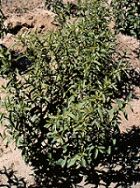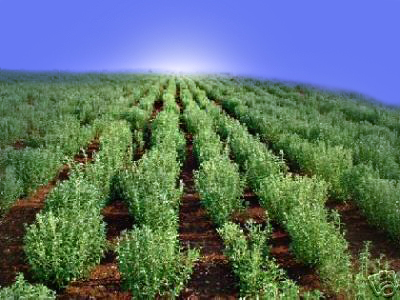1 loaf - 12 servings
2 very ripe, medium to large bananas
1/4 tsp powdered stevia extract
1/2 tsp stevia concentrate
1 tbsp lemon juice
2 cups whole wheat pastry flour
1/2 tsp baking soda
1 tsp baking powder
1/4 tsp salt
1/3 cup oil
1 large egg
1/2 cup plain nonfat yogurt or buttermilk
1 tsp vanilla extract
1/2 cup chopped walnuts (optional)Preheat the over to 350 degrees F. Oil a medium-sized loaf pan (7 1/2 "x 3 1/2 " x 2 1/2").
Mash the bananas in a small bowl. Mix the stevia extract, stevia concentrate, and lemon juice into the mashed bananas. Set aside.
Sift the flour, leavenings, and salt together in a bowl.
Beat the oil and egg together in a mixing bowl until creamy. Beat in the yogurt or buttermilk and the vanilla. Stir the mashed bananas into the liquid mixture.
Fold the dry ingredients into the wet ingredients, stirring as little as possible. Mix in the walnuts just before the flour is completely blended.
Place into the loaf pan. Bake for 50 minutes to 1 hour until a toothpick or fork stuck in the middle comes out clean. Turn out the loaf and cool on a rack.
Note: For maximum flavor, use very ripe bananas (brown spotted).
Enjoy your healthy banana bread!
Mash the bananas in a small bowl. Mix the stevia extract, stevia concentrate, and lemon juice into the mashed bananas. Set aside.
Sift the flour, leavenings, and salt together in a bowl.
Beat the oil and egg together in a mixing bowl until creamy. Beat in the yogurt or buttermilk and the vanilla. Stir the mashed bananas into the liquid mixture.
Fold the dry ingredients into the wet ingredients, stirring as little as possible. Mix in the walnuts just before the flour is completely blended.
Place into the loaf pan. Bake for 50 minutes to 1 hour until a toothpick or fork stuck in the middle comes out clean. Turn out the loaf and cool on a rack.
Note: For maximum flavor, use very ripe bananas (brown spotted).
Enjoy your healthy banana bread!














